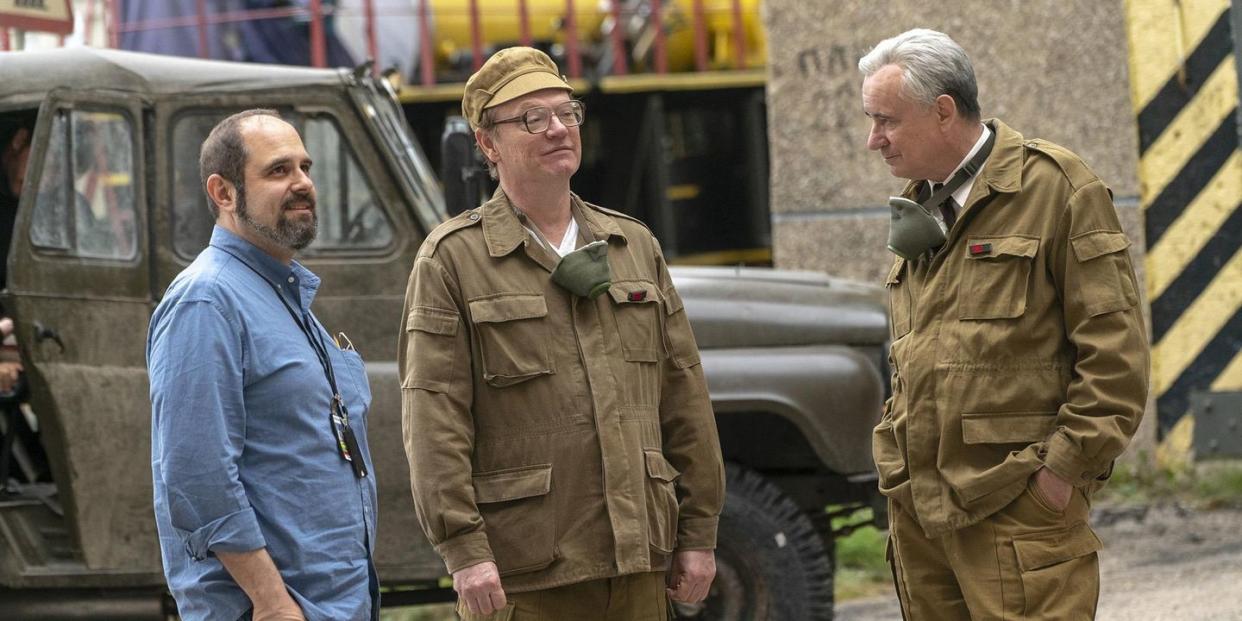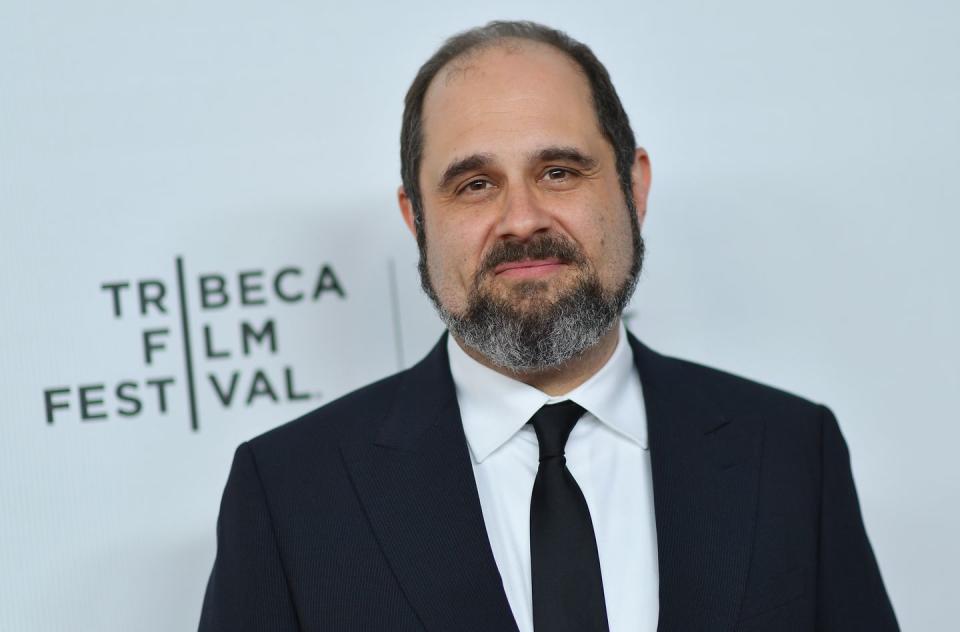How 'The Hangover' Sequel Writer Became the Emmy-Nominated 'Chernobyl' Creator

Craig Mazin is the creator and showrunner of HBO's Chernobyl.
Before Chernobyl, he had a career in comedy films, like Identity Thief and the Hangover sequels.
Chernobyl has been nominated for 19 Emmys, including two for Mazin himself.
Coinciding almost perfectly with the end of the behemoth Game of Thrones, HBO's true-story miniseries Chernobyl was a true case of avalanching success: what started as a relatively modest success gained more and more traction as the weeks went along; by the time the series wrapped up, the buzz was enormous, and audiences were hooked.
For their efforts, almost everyone involved has been nominated at the Emmys later this month; a staggering 19 nominations. While a few of them were obvious—stars Jared Harris, Stellan Skarsgård, and Emily Watson were all nominated for acting—the behind the scenes efforts have been commended as well. This notably includes Craig Mazin, who created the series. Mazin was nominated for both Outstanding Limited Series and Outstanding Writing for a Limited Series, and granted the huge reaction to the show, would seem to stand a reasonable chance of winning both trophies.
Back in April, we had the chance to talk to Mazin about Chernobyl, the research he put in, his career shift from comedy, and why he would want to make such a project. Ahead of the Emmys on September 22, you can read our interview with Mazin below:
When watching Chernobyl, you would never in a million years think that the person writing these scenes of advanced science, gruesome radiation poisoning, and general corruption was the same person writing jokes for Bradley Cooper and Zach Galifianakis in the latter two Hangover movies, or Melissa McCarthy in Identity Thief, or Charlie Sheen in Scary Movie 3. But that's the truth.
"I felt like I'd kind of been to the top of the comedy mountain," Craig Mazin, who spent more than two decades as a screenwriter before becoming Chernobyl showrunner, said in an interview with Men's Health.
So how—or why—would someone with a comedy background want to develop a show about the largest man-made disaster in history?
“Well, I'm not sure I did ever specifically want to," he said. "I started reading about it, and it became something that I had this connection to. It was a story that I felt I needed to tell, and it was a story I felt I knew how to tell.”
That project, of course, became the miniseries that's aired on HBO over the last five weeks. It's focus is squarely on the horrifying—and avoidable—disaster that took innocent lives and left the town of Pripyat, in the Ukraine, abandoned forever. Depressing as it may be, this is Mazin's true passion project. "That writing is the most reflective of who I actually am," he said.
Mazin began researching the Chernobyl Disaster in 2014, a year after the release of The Hangover Part III, and two years before The Huntsman: Winter's War—both movies that he wrote. The research began a year before his pitch to Carolyn Strauss, an executive producer of Chernobyl with deep ties at HBO. She had been president of the pay cable giant's entertainment division, commissioning shows like The Wire, The Sopranos, Curb Your Enthusiasm, and Sex and the City in that time.

Chernobyl prides itself deeply on accuracy, and Mazin went so crazy with his research that it might actually be easier to run through the types of research that he didn't do. In short, here's everything that Mazin did to make sure that he was bringing the most accurate depiction humanly possible to HBO:
Reading books written by people who were present and involved with the Chernobyl Disaster
Reading books by people who weren't present, but had the perspective to approach the disaster from a historical point of view
Reading "deeply influential" first-person accounts
Listening to audiotapes that needed to be translated
Watching documentaries
Reading government reports
Looking at power plant blueprints
Speaking with professors of nuclear physics
Periodically checking back in with those professors to ensure proper understanding
Checking with military advisors to make sure all of the gear was proper.
Another aspect of the research came not from looking into the disaster itself, but rather what life was like living in that setting at the time. For this, Mazin touched base with people who spent time living in the Soviet Union—more specifically, Soviet Ukraine. "I spoke with people who had lived there, and who were there at the time, and who could read the scripts and say, 'Great, except, nobody would say that. They would say that there,'" he said. "'We wouldn't do that, but we would do this.'"
Mazin wasn't the only one on set who was obsessed with the disaster, though. Odile Dicks-Mireaux—a costume designer who previously worked on movies like 2015's Brooklyn with Saoirse Ronan—worked in the same capacity on Chernobyl, and was just as detail-oriented as Mazin was, with every last detail down to people's shoelaces being based on an authentic reality. Every last detail, it seems, was of dire importance.
"That was our thing, to show respect to the people that went through Chernobyl by getting the details of their life right," Mazin said. "It was a question of respect for us.
Throughout all of his obsession with getting the details exactly right, though, Mazin never lost his sense of humor, or got uptight about anything. "He's very funny, and lovely to be around," said Stellan Skarsgård, who, along with Jared Harris, plays one of series leads. "He is not stupidly protective about his material. You can discuss anything with him. You have to prove your point, of course, but from my point of view, he's been very open."
But in the end, not only is Chernobyl something completely new for Mazin, but it's work he's thrilled to do. "This is a whole new thing for me that I find incredibly satisfying, and fulfilling, which is—hold on to your hats—doing what I want to do," he says. "And after 25 years in the business, it's a good feeling."
You Might Also Like

